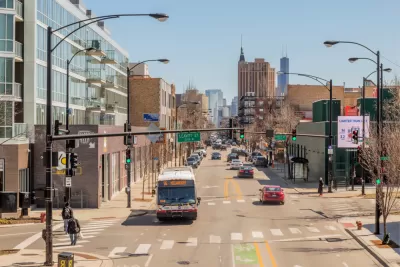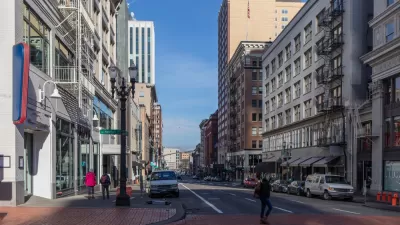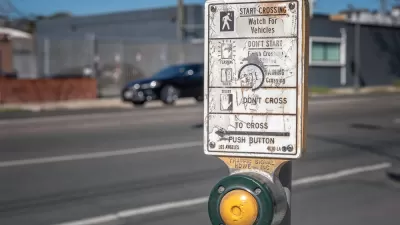Research from Chicago suggests that the city’s traffic calming infrastructure is concentrated in the most affluent neighborhoods, contributing to higher rates of road deaths in lower-income neighborhoods.

An article by Erica Gunderson for WTTW News examines the uneven deployment of traffic calming devices in Chicago, an issue that can have a significant impact on traffic safety amid rising rates of road deaths.
According to José Miguel Acosta Córdova, senior transportation policy analyst at the Little Village Environmental Justice Organization, Chicago’s wealthier North Side has more traffic calming measures in place than the South and West sides of the city. And while traffic tickets are also issued at higher rates in these neighborhoods, “Leslé Honoré of the Center for Neighborhood Technology says responding to traffic deaths with increased ticketing misses the mark.” As Honoré sees it, “What we need is better planning, what we need are streets that are designed for everyone and not just for cars.”
Honoré continues, “We know when this city was planned and how segregated it is, that Black and Brown communities weren’t given the infrastructure and were under resourced purposefully. And what that creates is the legacy of continued under-resourced communities, infrastructure that’s not maintained, streets and sidewalks that aren’t walkable.”
FULL STORY: Traffic Deaths Are On Rise This Year. How Does Chicago’s Segregation Impact Safety?

Planetizen Federal Action Tracker
A weekly monitor of how Trump’s orders and actions are impacting planners and planning in America.

Congressman Proposes Bill to Rename DC Metro “Trump Train”
The Make Autorail Great Again Act would withhold federal funding to the system until the Washington Metropolitan Area Transit Authority (WMATA), rebrands as the Washington Metropolitan Authority for Greater Access (WMAGA).

DARTSpace Platform Streamlines Dallas TOD Application Process
The Dallas transit agency hopes a shorter permitting timeline will boost transit-oriented development around rail stations.

Renters Now Outnumber Homeowners in Over 200 US Suburbs
High housing costs in city centers and the new-found flexibility offered by remote work are pushing more renters to suburban areas.

The Tiny, Adorable $7,000 Car Turning Japan Onto EVs
The single seat Mibot charges from a regular plug as quickly as an iPad, and is about half the price of an average EV.

Supreme Court Ruling in Pipeline Case Guts Federal Environmental Law
The decision limits the scope of a federal law that mandates extensive environmental impact reviews of energy, infrastructure, and transportation projects.
Urban Design for Planners 1: Software Tools
This six-course series explores essential urban design concepts using open source software and equips planners with the tools they need to participate fully in the urban design process.
Planning for Universal Design
Learn the tools for implementing Universal Design in planning regulations.
Municipality of Princeton
Roanoke Valley-Alleghany Regional Commission
City of Mt Shasta
City of Camden Redevelopment Agency
City of Astoria
Transportation Research & Education Center (TREC) at Portland State University
US High Speed Rail Association
City of Camden Redevelopment Agency
Municipality of Princeton (NJ)





























